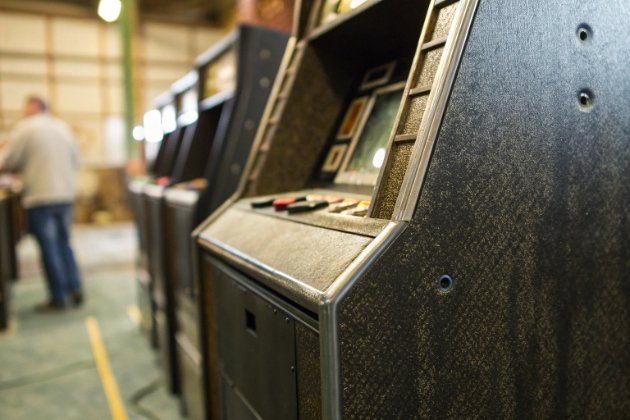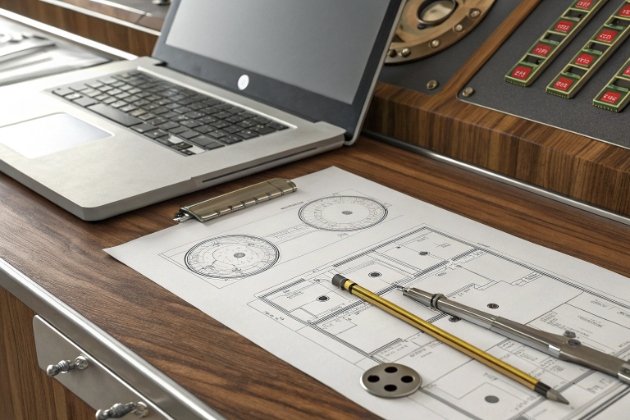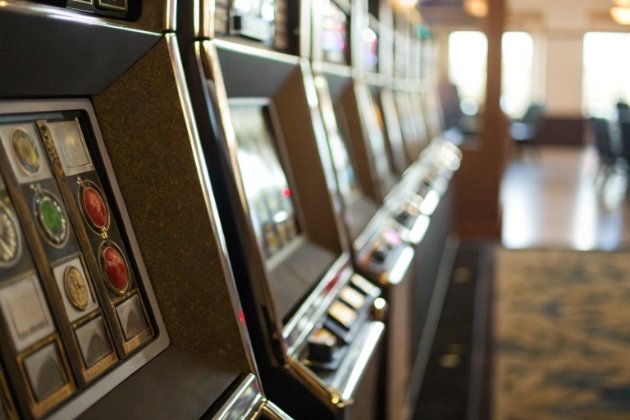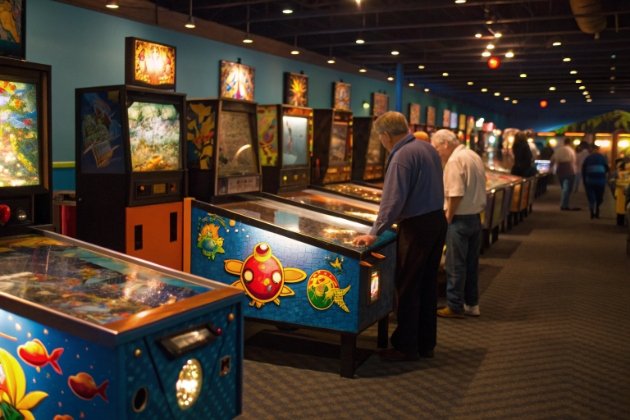I’ve seen venue owners freeze when they hear “U.S. certification.” I know how worrying non-compliance can be for an import business.
I ensure our cabinets meet U.S. safety standards by designing to UL electrical rules, using fire-retardant materials, and running third-party tests. I require full documentation and follow updates to regulatory changes to protect operators and players.
Read on to see the exact steps, tests, and paperwork that make a cabinet safe and legal for American venues. This guide walks you through design, testing, certification, and documentation so you can import with confidence.1
How do you ensure the cabinets meet U.S. regulatory requirements?2
I once had a client lose weeks because a supplier ignored U.S. electrical norms. I learned to start compliance checks early.
I make sure cabinets meet U.S. regulatory requirements by mapping applicable standards, embedding certified components, and scheduling third-party lab testing before shipment. I keep records and update designs to match federal and state rules.

To meet U.S. rules, compliance must be planned from the first sketch. I begin by identifying which standards apply. Typical references include UL standards for electrical safety, FCC rules for emissions, and local building/fire codes for installation.3 Early in design, I choose UL-listed power supplies, fused circuits, and insulated wiring. This reduces risk later.
Key Design Actions for Regulatory Compliance
- Specify UL-rated components (power supplies, transformers, fuses).
- Use insulated wiring, secure cable harnesses, and labeled terminals.
- Provide proper grounding paths and surge protection.
- Design ventilation to meet thermal safety margins.
Testing and Verification Steps
- Pre-compliance checks during prototype builds.
- Submit samples to a Nationally Recognized Testing Laboratory (NRTL) like UL, Intertek (ETL), or TÜV.4
- Address any non-conformance findings and retest.
- Obtain certification marks and test reports.
| Regulatory Area | Typical Standard | Why It Matters |
|---|---|---|
| Electrical Safety | UL 62368-1 (or relevant UL standard) | Prevents shock/fire |
| EMI/EMC | FCC Part 15 | Avoids radio interference |
| Materials | UL94 (flame retardance) | Reduces fire risk |
| Mechanical Safety | ASTM / local codes | Prevents tipping/injury |
I also ensure labeling and user manuals meet U.S. expectations.5 Manuals include power specs, grounding instructions, and safety warnings. Finally, I track any state-level gaming rules (for example Nevada) that may require extra testing or local approvals.
Are the cabinets certified for use in American gaming venues?6
I used to assume “built well” was enough. I learned certification is the proof operators require.
I obtain formal certification from NRTL labs and issue test reports that prove cabinets are safe for U.S. venues. I aim to supply UL or ETL certificates and the exact lab reports operators can present to venue regulators.

Certification is not an afterthought — it is a deliverable. I prepare production samples and work closely with test labs. The lab inspects electrical diagrams, mechanical construction, component lists, and runs electrically-focused tests.7 Common tests include dielectric withstand, ground continuity, leakage current, and thermal endurance.
Typical Certification Deliverables
- NRTL test report (detailed test results).
- Certification marking permission (e.g., UL file number).
- Component certificates (e.g., power supply UL listing).
- Product user manual and labels matching tested configuration.
| Certificate Type | Issuer | What It Shows |
|---|---|---|
| Product Safety Report | UL / ETL / TÜV | Full test logs and pass/fail |
| Component Listings | Manufacturer / UL | Parts are certified to spec |
| EMC Report | Accredited lab | Emissions within FCC limits |
If operators need jurisdiction-specific clearances (state gaming control boards), I help collect and present all documentation.8 This includes wiring diagrams, schematic BOMs, and thermal test evidence. Where local rules request additional tests, I coordinate with labs to run the required checks.
Can I get documentation proving the cabinets meet safety standards?9
I’ve had clients refused at port without proper paperwork. I now treat documentation as essential freight.
I provide complete documentation sets including NRTL test reports, component listings, BOM, wiring diagrams, and compliance certificates to prove cabinets meet U.S. safety standards. I centralize these files for customs and venue audits.10

Documentation is the bridge between manufacturing and market entry. I compile a compliance dossier per shipment. The dossier typically contains the certificate of conformity, NRTL test reports, component datasheets (power supply, display), wiring schematics, and the user manual. I also include the SDS (safety data sheets) for flame-retardant materials if requested.
Contents of a Standard Compliance Dossier
- Product test report (NRTL).
- Component certifications and datasheets.
- Electrical schematics and wiring harness maps.
- Material safety data sheets (if applicable).
- User manual, labels, and installation guide.
| Document | Purpose | Supplied To |
|---|---|---|
| NRTL Test Report | Proof of safety testing | Customs / Venues |
| BOM & Schematics | Traceability of parts | Technical audits |
| SDS | Material safety info | Regulatory bodies |
| User Manual | Safe operation & warnings | End users / operators |
I also maintain a revision history. When a cabinet model changes (new PSU, different display), I update the dossier and retest only the affected parts. This targeted retest approach saves time while keeping certification valid.
What safety features are integrated into the cabinet design?
When I tour busy venues, I look for features that protect players and machines. Safety is both passive and active.
I integrate safety features such as fire-retardant panels, insulated wiring, ground-fault protection, secure locks, ventilation, stability anchors, and emergency shutdown circuits into cabinet designs. Each feature reduces risk and aligns with certification tests.

A safe cabinet includes layered protections. I design the enclosure with flame-retardant boards, edged so no sharp metal is exposed. Inside, cables are routed in loom tubing and fixed with clamps. Power entry includes fuses, surge protectors, and clear labeling. For thermal safety, I fit thermostatically controlled fans and temperature cutoffs.
Core Safety Features
- Fire safety: UL94-rated panels, thermal cutouts.
- Electrical safety: Grounding, fuses, surge suppression, insulated connectors.
- Mechanical safety: Rounded edges, anti-tip brackets, lockable service doors.
- Thermal management: Fans, vents, temperature sensors.
- Environmental protection: Gaskets, filtered vents against dust and moisture.
| Safety Area | Built-in Feature | Benefit |
|---|---|---|
| Fire | Flame-retardant panels (UL94) | Slows ignition and spread |
| Electrical | Ground continuity & fuses | Prevents shock and overload |
| Stability | Anti-tip brackets | Prevents tipping injuries |
| Cooling | Temperature sensors & fans | Avoids overheating failures |
I also add human-centered design: clear emergency stop access, labeled power switches, and step-by-step service guides for technicians. For networked cabinets, I isolate monitoring traffic and secure firmware updates to reduce cyber risk. Finally, I offer optional add-ons like tamper-proof hardware, waterproofing seals for semi-outdoor venues, and reinforced mounts for heavier displays.
Conclusion
Plan compliance from the start. Use UL-rated components, run third-party NRTL tests, keep a full compliance dossier, and integrate layered safety features to meet U.S. standards and protect your venue.
Footnotes
- UL Safety Standards Overview — ul.com
- U.S. Product Safety Compliance Guide — cpsc.gov
- Federal Safety Regulations for Electronic Equipment — osha.gov
- Nationally Recognized Testing Laboratories (NRTL) List — osha.gov/nrtl
- UL Labeling and Manual Requirements — ul.com/resources
- Gaming Equipment Certification Requirements — gaming.nv.gov
- UL 62368-1 Electrical Equipment Standard — ulstandards.ul.com
- State-Level Gaming Device Regulations — gaming.nv.gov
- Certificate of Conformity Guidance — cbp.gov
- FCC Part 15 Compliance Rules — fcc.gov



